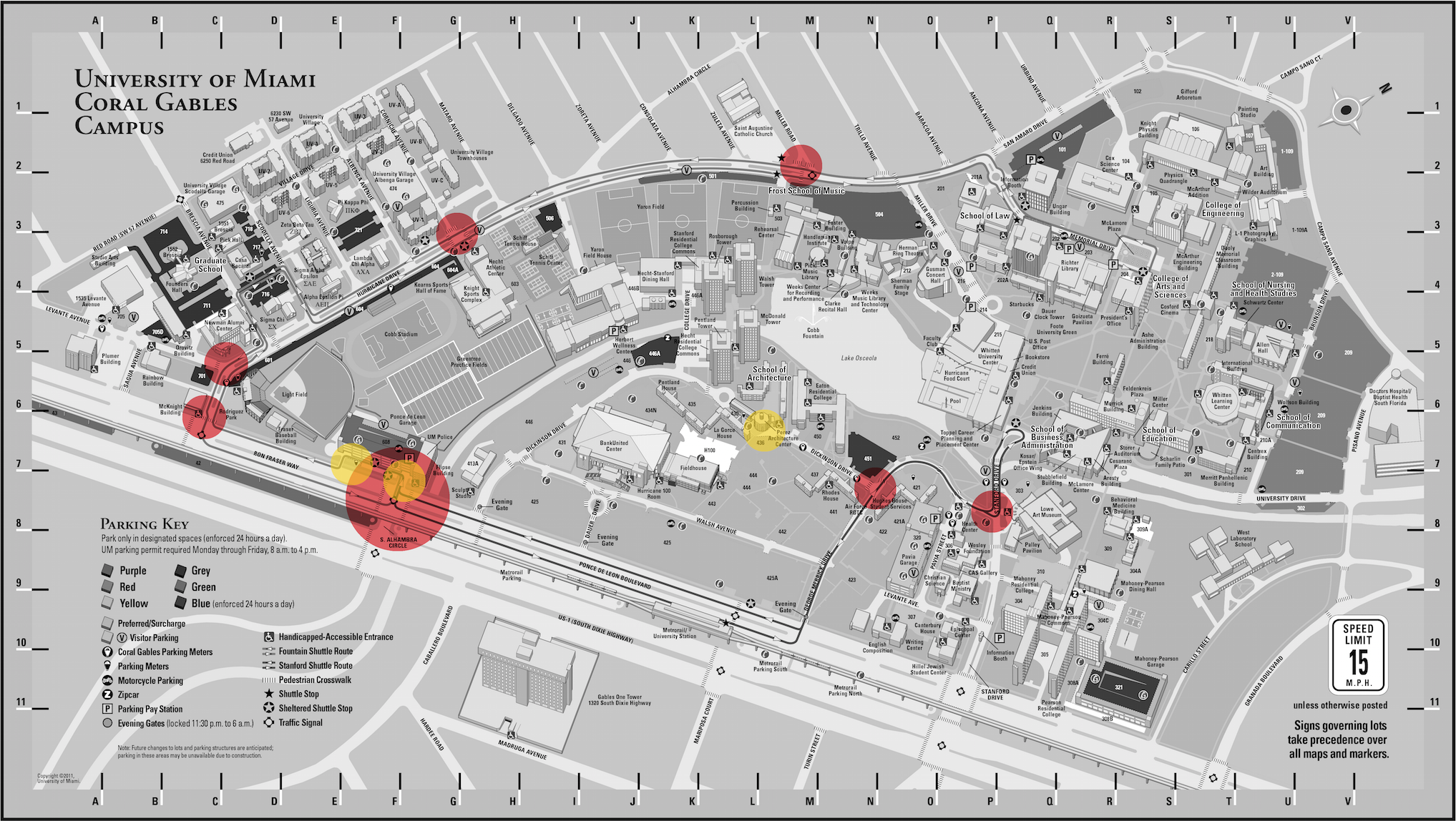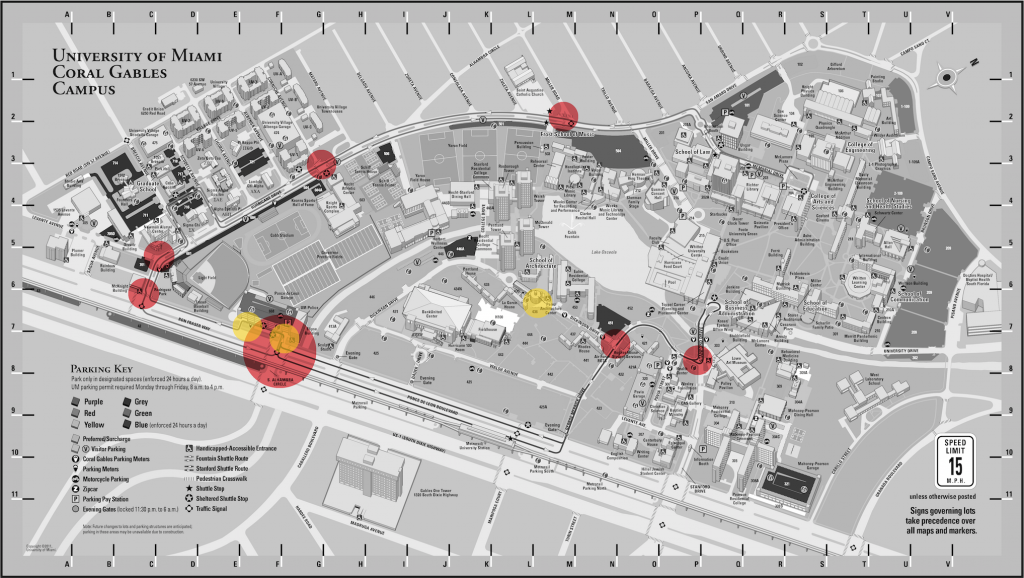

Two major accidents involving pedestrians occurred around campus this semester. Most recently, junior Matthew Wisehaupt was struck by a car just outside the University Village (UV). He was hospitalized and suffered “non-life-threatening injuries,” according to a report published by The Miami Hurricane, and was released from the hospital two days after he was hit.
The UM Police Department (UMPD) said they are not taking any more chances. Last week, officers passed out fliers to commuter students near the UV that outlined basic steps for walking and biking with a “defensive” mindset. The police department also organized a pedestrian awareness event on Monday to urge students to pay attention when walking around campus.
John Gulla, crime prevention officer at UMPD, said a “defensive” mindset means students are fully aware of their surroundings, especially when walking in high-risk areas.
Gulla said pedestrian awareness is key to reducing the amount of pedestrian-vehicle collisions. Compared to other major areas in the U.S., South Florida is one of the most dangerous places for these kinds of accidents, and distractions like cell phones don’t help the situation. He added that it is just as dangerous to text while walking, biking and longboarding than it is by driving.
Gulla said that he often deals with accidents where both the driver and pedestrian were distracted by their phone or other personal device.
“The convergence of these two issues has made a high-risk area even higher risk,” he said.
Though UMPD doesn’t see an extraordinary amount of pedestrian collisions on campus, Gulla recognized that there were minor accidents that go unreported.
Campus police attempt to prevent vehicle-pedestrian collisions by narrowing their focus on accident hot spots. The police department works closely with Campus Planning and Development to change unsafe areas when necessary.
Gulla cited the new crosswalk and signs around the intersection of George Merrick Drive and Stanford Drive (across from the Health Center) as an example of this reactionary approach.
UMPD can’t, however, solve problems that they are unaware of. The department relies on feedback from the UM community to make campus safer. For that reason, Gulla urges students to contact UMPD if they have safety concerns for specific areas in and around campus.
Despite the seemingly normal number of collisions that UMPD sees in a year, students like junior Maite Torres cite several collisions within the last two years.
Torres was on her bike when she was clipped by a car last year. While riding from the Flipse building and heading toward Stanford and Hecht, her back tire was bumped by a car that failed to stop before leaving the wellness center parking lot.
“The driver looked at me like it was my fault,” she recalls.
Though it was a close call, Torres said she wasn’t hurt. She considered trying to get information about the vehicle that hit her, but since she felt fine at the time, she decided against taking action.
Gulla urges students to take even minor collisions seriously and to make sure they call UMPD.
“You don’t have to criminalize anyone,” he said. “The police can determine that somebody was at fault but dealing with that is up to the insurance companies.”
HOW TO AVOID GETTING INTO AN ACCIDENT
If you’re biking, wear a helmet. Not only is it a state law, but a helmet can provide life-saving protection in the event of an accident.
If you’re walking and listening to music, make sure you can still hear your surroundings. This is as easy as only wearing one headphone, or keeping the volume of your music at a low level.
Stay alert, and don’t assume that cars will stop for you to cross the street – even if you’re in a crosswalk. The same goes for crossing roads that leave parking lots. Many of these intersections on campus are obscured by bushes, so it’s essential to stop before crossing.





